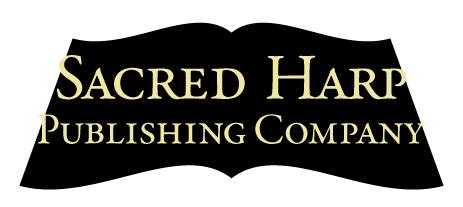
Title page of Hymns for Sunday Schools, published in 1824 by The Protestant Episcopal Sunday and Adult School Society of Philadelphia.
One of the things that seems to intrigue new singers is the role of the leader, standing in the center of the hollow square beating time. Many assume that this practice is unique to Sacred Harp singing, but evidence from early sources suggests that our current leading style has origins in pre-revolutionary days. For example, William Tans’ur, whose writings were widely known in New England, wrote in his Melody of the Heart or the Psalmist’s Pocket Companion (1737):
Common time is measured by the motion of the hand or foot, which motions represent the motions of a Pendulum by putting it down and taking it up in equal motion. Common time is measured in even numbers … So your hand or foot must be down and up in every bar, in equal time as the figures and letters direct. Triple time, moves by odd numbers … Two to be performed with the hand or foot down and one up as above.
While this is a pretty good summary of what the leader does, Tans’ur does not say whether this movement of the hand, or foot, is to be done by a single person or by everyone. I have seen similar descriptions of beating time in other early hymnals, but they but are equally vague about the role of the leader.
I have recently discovered a copy of a small words-only hymnal that casts a new light on leading. Hymns for Sunday Schools, published in 1824 by The Protestant Episcopal Sunday and Adult School Society of Philadelphia, has on its title page, like many such books, an image of children. However this one shows them with oblong books. The child on the right is beating time with an emphatic motion much like modern singers are taught to lead—he even looks up confidently from his book. Though the child on the left is concentrating on the music, he is also beating time. His more restrained motion evokes the current practice of singers in the class as they mark time along with the leader. This image suggests that remarkably little has changed over two hundred years in the practice of leading music, at least from a Sacred Harp singer’s perspective.

An engraving showing children singing out of oblong books and beating time much like modern singers are taught to lead. From Hymns for Sunday Schools, published in 1824 by The Protestant Episcopal Sunday and Adult School Society of Philadelphia. Photography by Laura Densmore.
Few images from the time period portray this type of leading. More typical is an engraving printed in Hymns for Sunday Schools, published in Philadelphia in 1828 by The American Sunday School Union (ASSU). Here the children are kneeling while singing from conventional upright sheets and there is no leader.

This more typical engraving depicts a children kneeling while singing from conventional upright sheets. From Hymns for Sunday School, published in Philadelphia in 1828 by The American Sunday School Union.
Publications by ASSU required unanimous approval by a Publications Committee, which had to have members of at least three different denominations, ensuring that all works were free of denominational bias. This committee included members of the Episcopal Church, so we may take it that they approved of this book and the image. It would therefore appear that their 1824 image of a leader beating time was not only one of the earliest images of leadership but one of the last of it, at least in the Episcopal Church. The musical practice represented in the second image reflects shifting musical tastes during the period, as the American shape note tradition gradually gave way to a European-influenced choral style.

